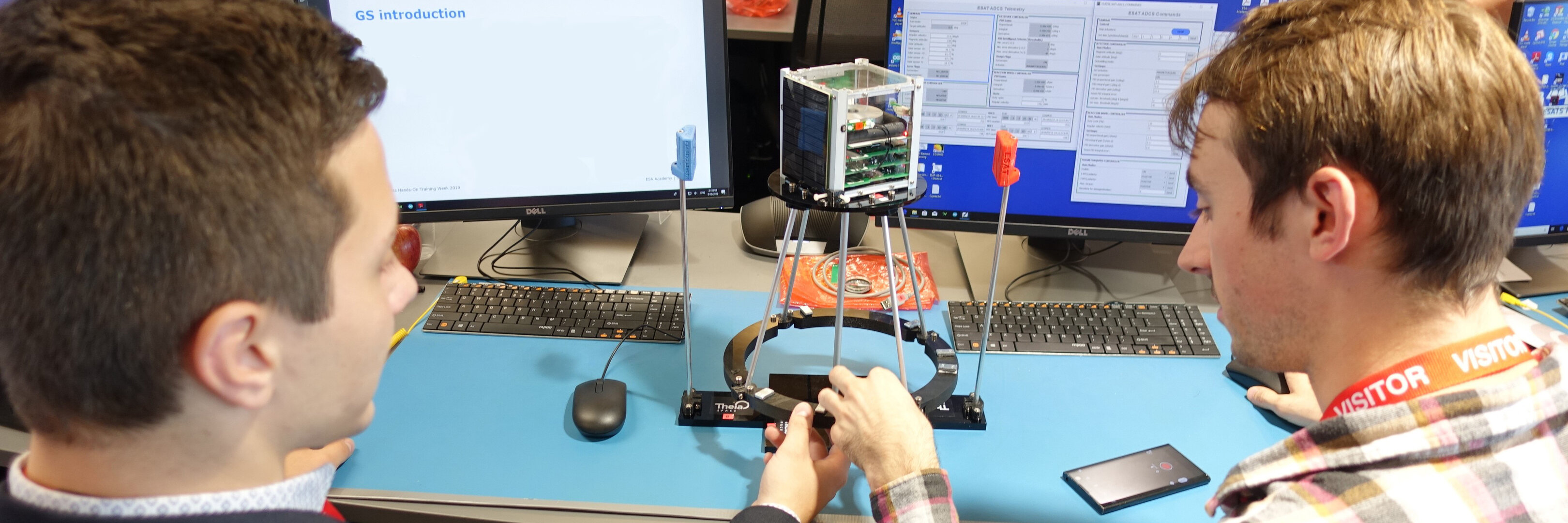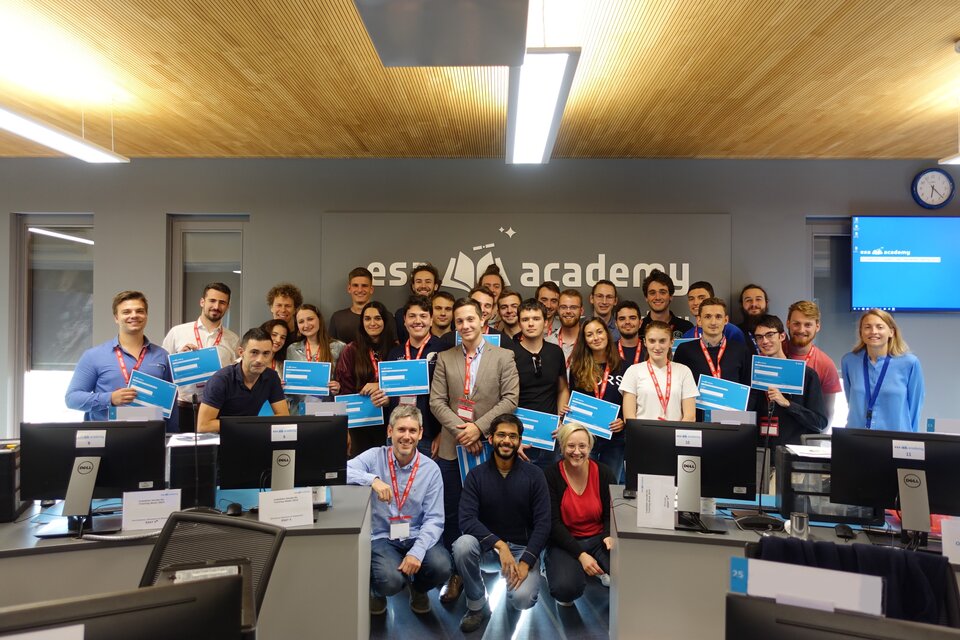Students experience of miniature satellites with CubeSats Hands-On training
CubeSats are highly versatile satellites built up by 1 or more units measuring just 10cm along each side. Learning how to best use these tools is a valuable skill, so ESA Academy has hosted the CubeSats Hands-On Training Week 2019. Running from 16 – 20 September 2019 at ESA Academy’s Training and Learning Facility, ESEC-Galaxia, Belgium, the event was attended by 26 university students from 15 different ESA Member States and Canada.
The Training Week had a clear objective: transfer hands-on knowledge to university students who are keen to start their own educational CubeSat initiatives, or who are already at the conceptual or preliminary design stage of a CubeSat project at university. To achieve this aim, ESA Academy assembled a team of experienced tutors to lead the course. These included ESA experts, the Fly Your Satellite! (ESA’s educational CubeSat initiative) team, and two engineers from Theia Space (Universidad Politecnica de Madrid) delivering laboratory sessions with high-grade model CubeSats, called Educational Satellite models (ESATs).
The first day of the training week acquainted the students with the Fly your Satellite! programme. They were introduced to best practices in Systems Engineering, and then enjoyed their initial lab session during which they developed software code to control ESAT’s payload: a thermal experiment carrying a heater and an LED. The exercise evolved from, first of all, being able to blink the LED, all the way to developing a simple controller for the heater.
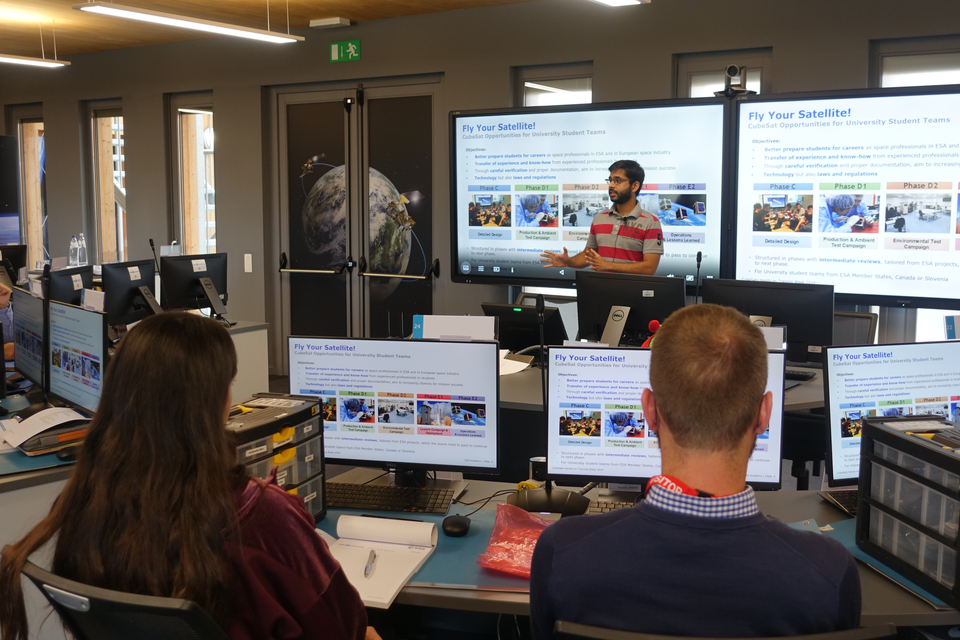
“From the very beginning this training week far exceeded my expectations,” said a Romanian student from the University Politehnica of Bucharest. “The lectures were full of interesting information and I like that we worked with real satellite subsystems. During the week I met a lot of great people and made new friends. I would definitely recommend this experience to anyone interested in starting his/her satellite engineering career.”
Tuesday began with an engrossing lecture on Software Engineering, which focussed on software architecture, development, and testing. Following on from this, a specialist in On-Board Data Handling (OBDH) explained the importance of having good structures in place to handle data, as the OBDH subsystem is responsible for managing the flow of information (data, telemetry, and telecommands) within the satellite. The students then practised applying their recently acquired knowledge by programming the ESAT to be receptive to their own customised telecommands, and to broadcast telemetry packets defined by the students themselves. Rounding off the busy afternoon, the students were able to take a tour of ESEC and the PROBA mission operations centre.
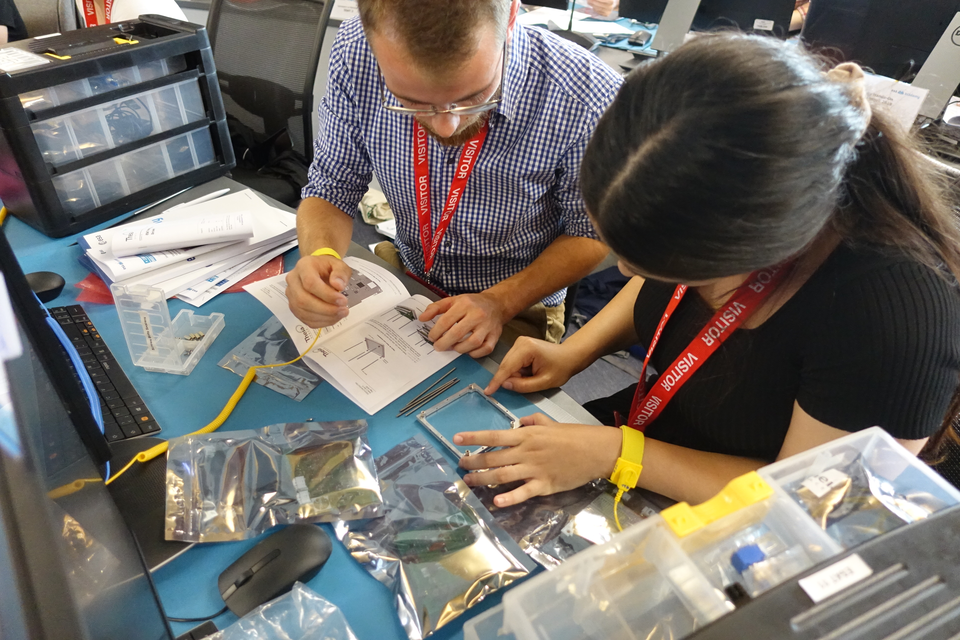
The Training Week’s third day commenced with a lecture on Electrical Power Systems (EPS). He first explained the essentials of a good EPS subsystem before giving the students useful tips specifically for CubeSats, based on his extensive experience working with similar-sized satellites. To put their newfound knowledge of solar cells and batteries to use, the students donned their sunglasses and dived straight into a lab session using a solar simulator to experiment with the ESAT’s solar panels and batteries. The day ended with a lecture on Communication subsystem, including many tips for CubeSat communication subsystem developers, followed by a small exercise themed around CubeSat communications. The students learned much of use, including the secrets of performing good link budgets.
The students also enjoyed a lecture on Attitude and Orbit Control Systems. This was promptly followed by a lesson on Assembly, Integration and Verification. The students learned the importance of writing, and following, detailed procedures. They investigated different types of verification methodologies that will be applied to their satellite to ensure that it is fit for spaceflight. A laboratory session then followed, which made use of the ESAT attitude control system (a reaction wheel and a set of magnetorquers) to help the students understand and develop a simple attitude control algorithm. Finally, the participants assembled the ESAT and performed integration tests in accordance with what they had learned during the lectures.
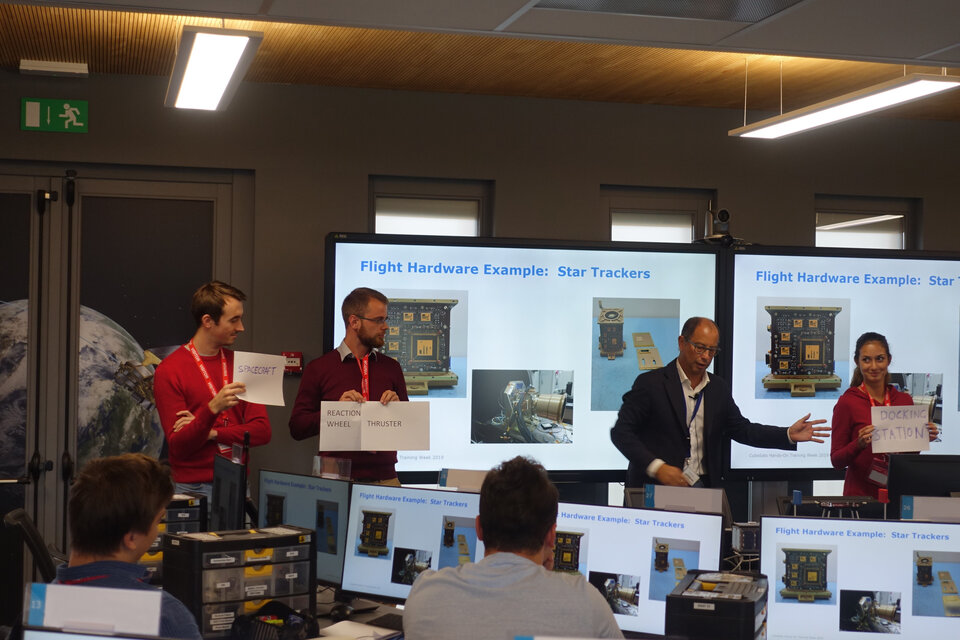
The fifth and final day focussed on Spacecraft Operations. A mission operations concepts specialist taught the students about the unforgiving nature of spacecraft operations, and gave them sage advice on how to design the system with operations in mind (from ground segment to spacecraft). Completing the week in the best possible way, the students had to apply all the knowledge they had gained during their stay at ESEC to a simulated operations scenario. The students were put under pressure as they had to plan their engineering and science operations in advance, and then execute them during simulated ground station passes, fixing any anomalies as they appeared in order to successfully complete the mission defined by the Theia Space trainers.
“For me, the CubeSats Hands-On Training Week was like a university course all condensed into one week,” explained a Portuguese student from the Instituto Superior Técnico. “It made a link between the theory that we learn from lectures in university and real life scenarios. I feel that this experience enriched my knowledge and that it will be useful in my future.”
Throughout the week the students became familiar with the Fly Your Satellite! programme, learning about its requirements and how to apply. This will help them should they decide to continue their space exploration careers by applying with a CubeSat project in the future!
For more information about current ESA Education opportunities, please visit our website.
Contact: tlp@esa.int, cubesats@esa.int


